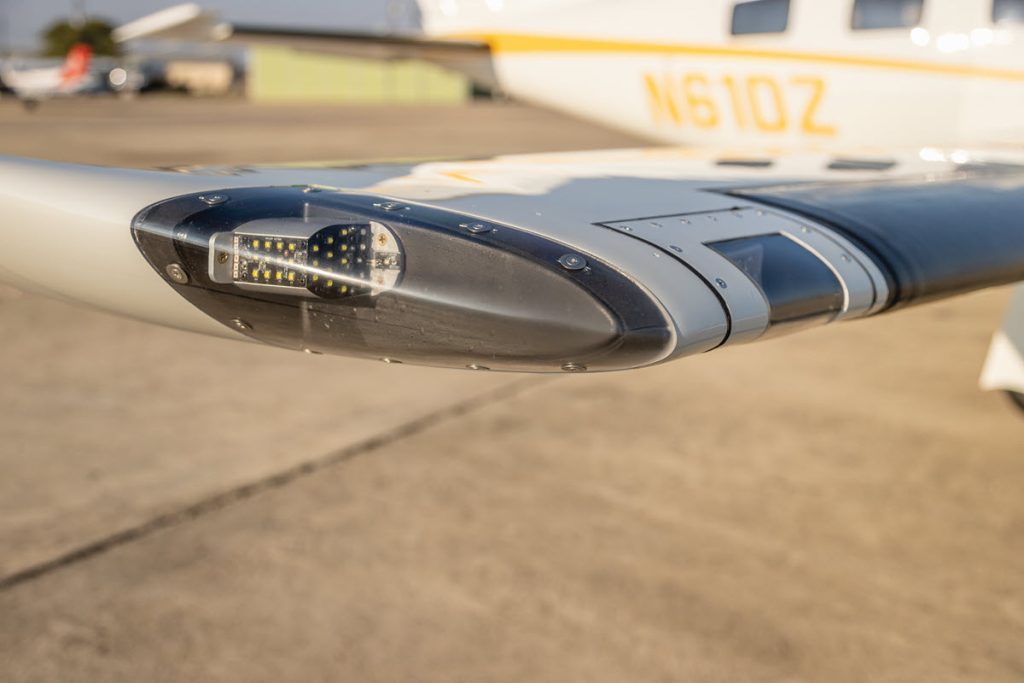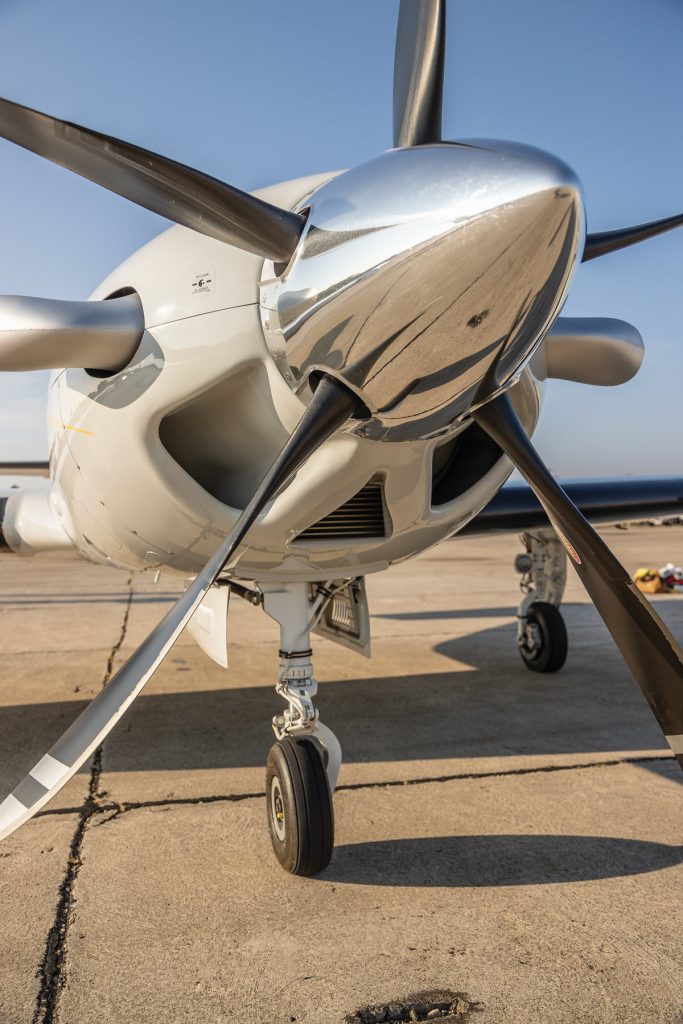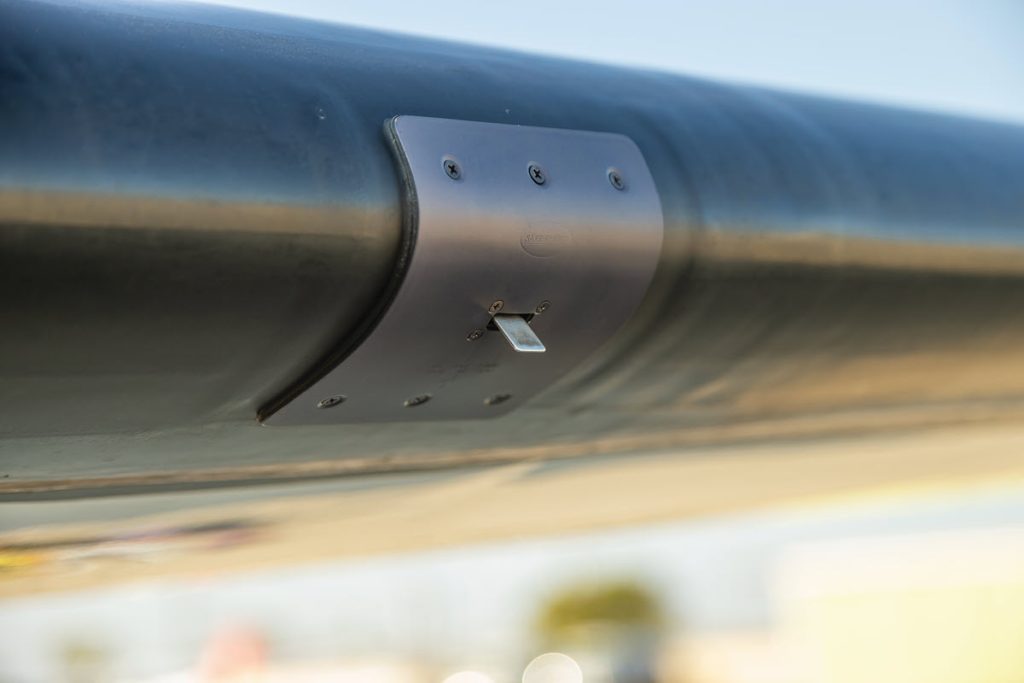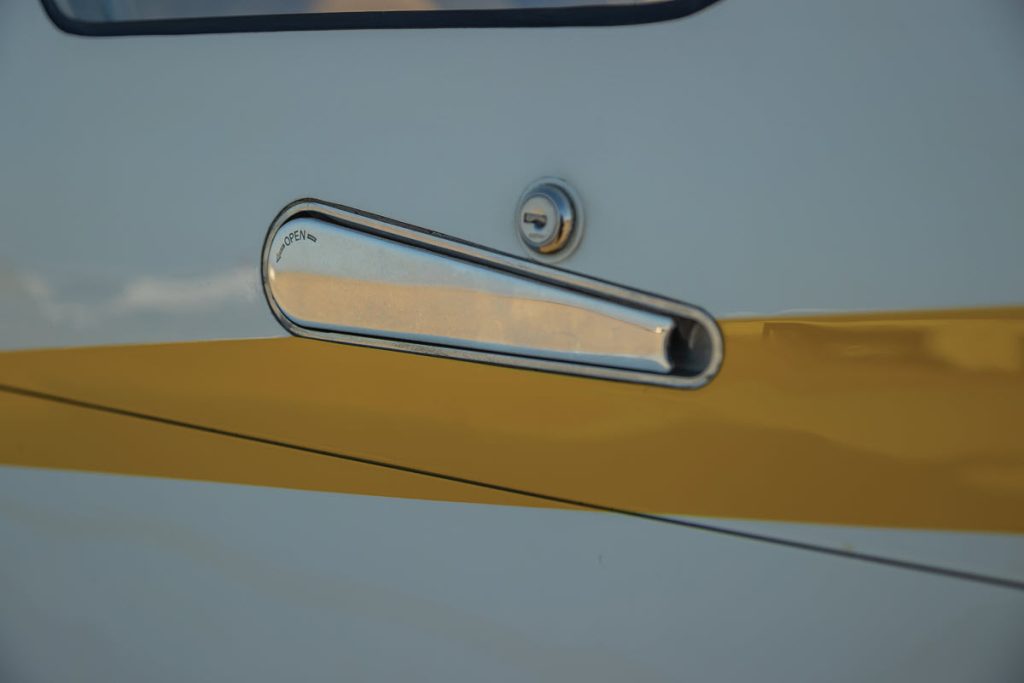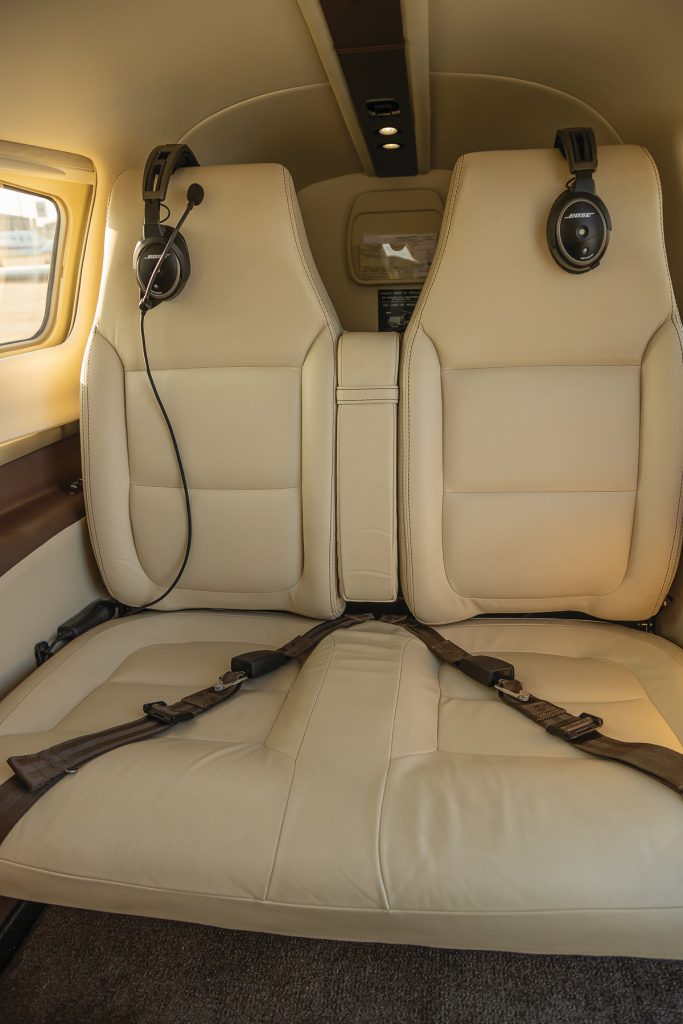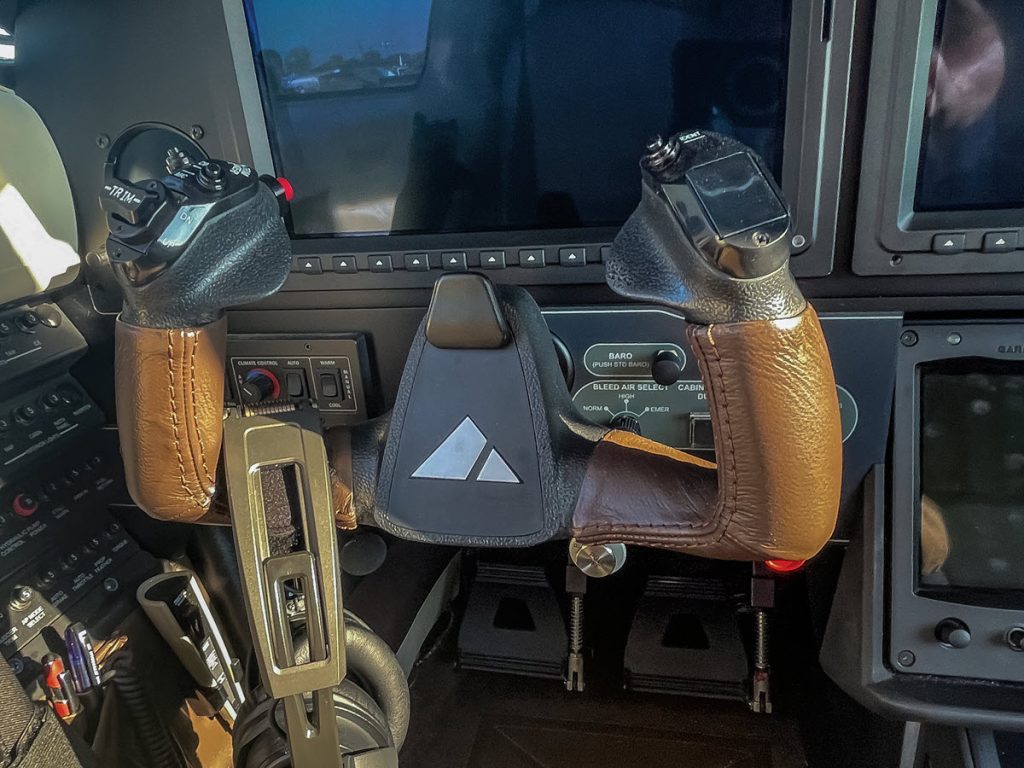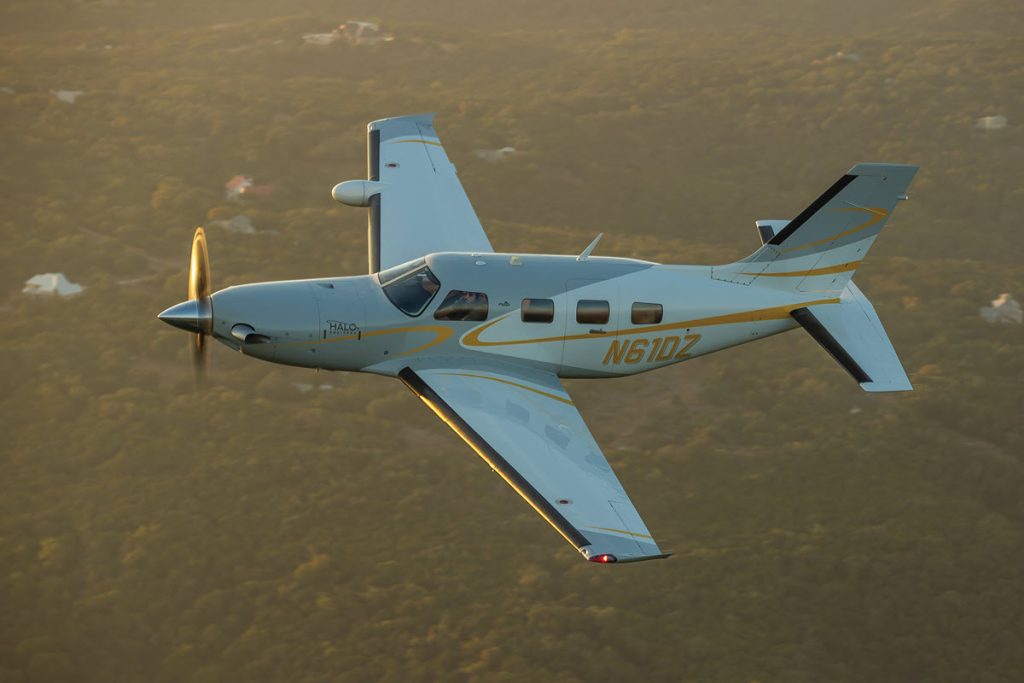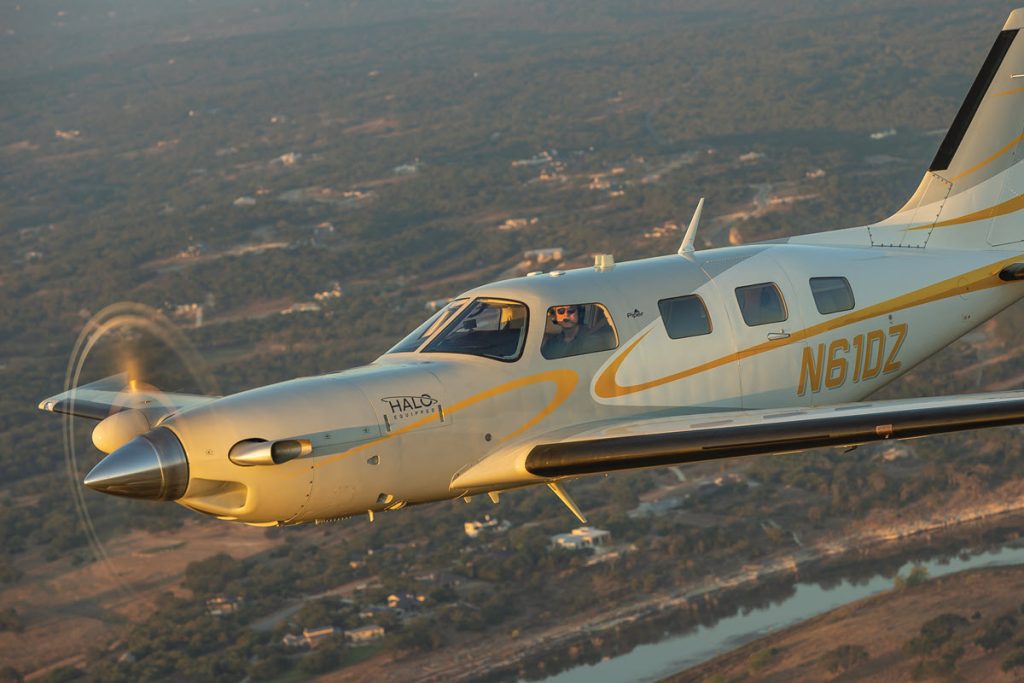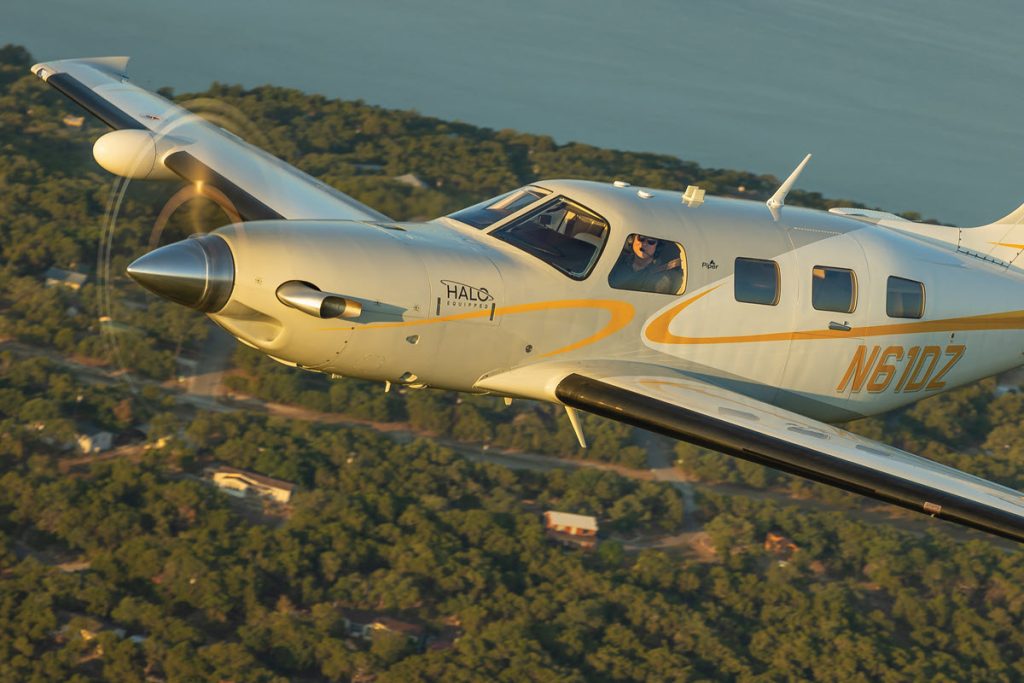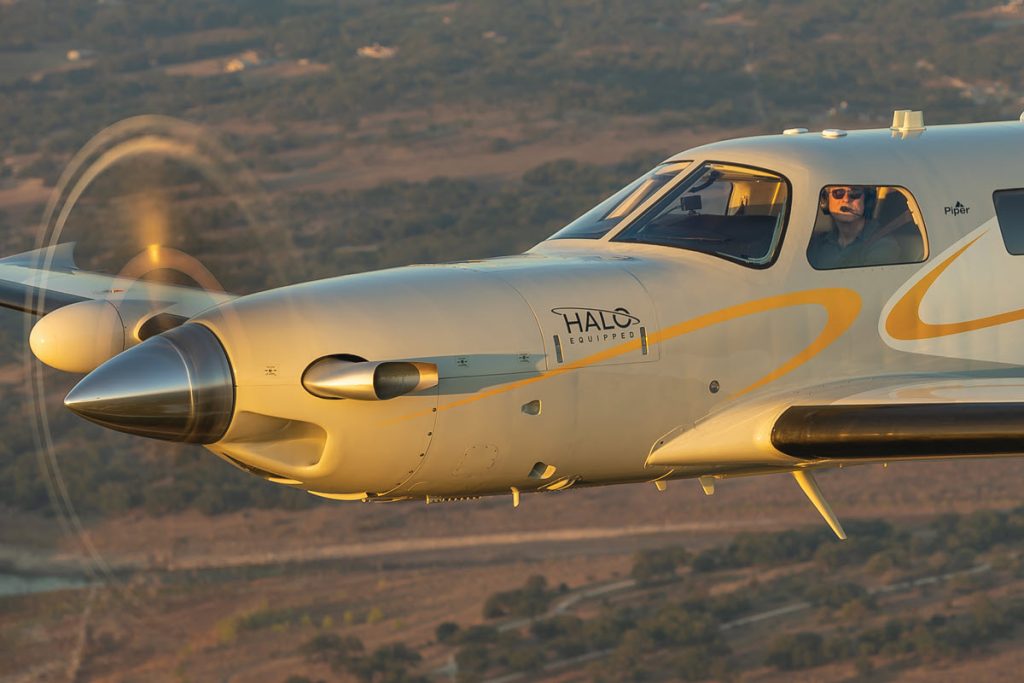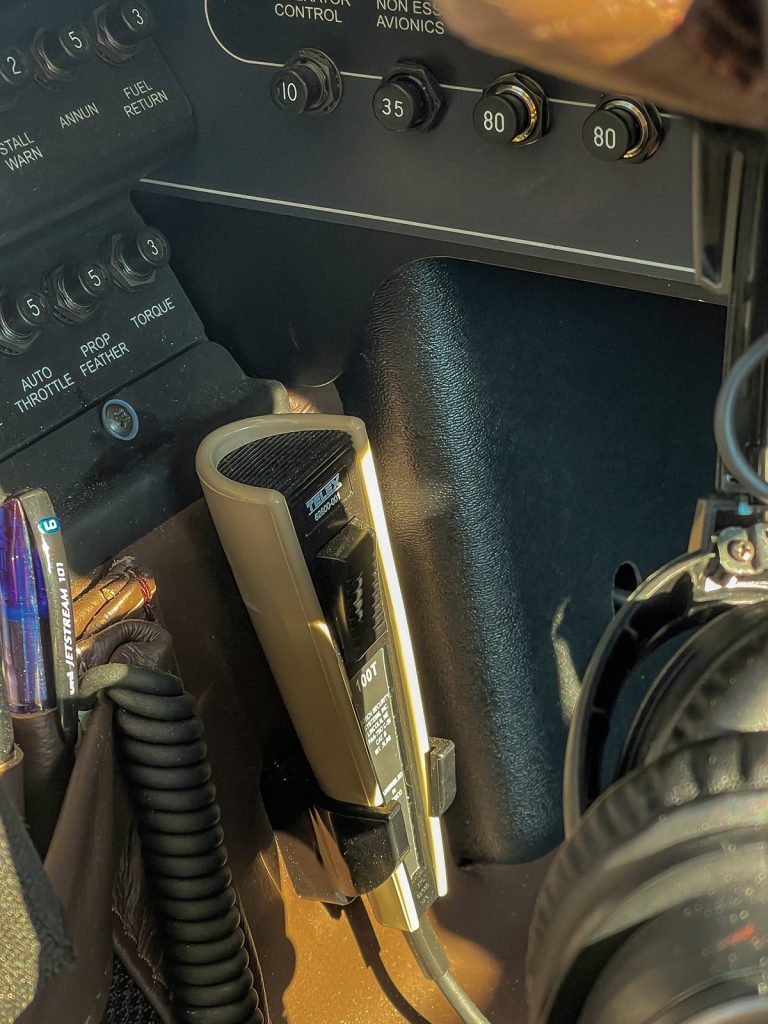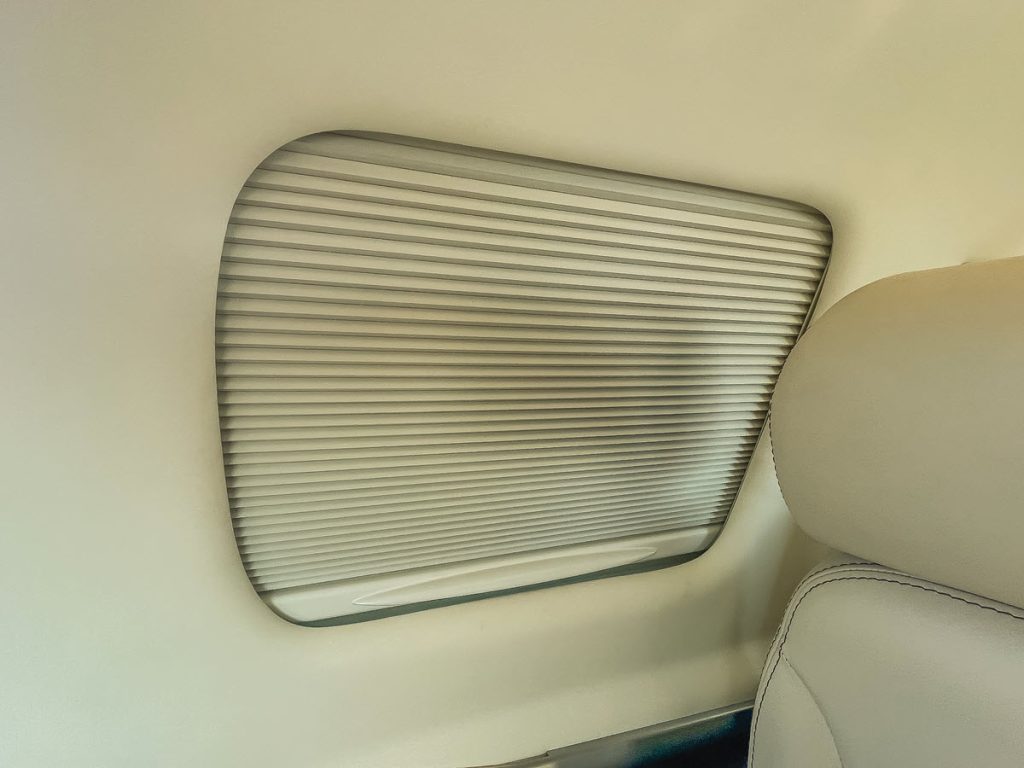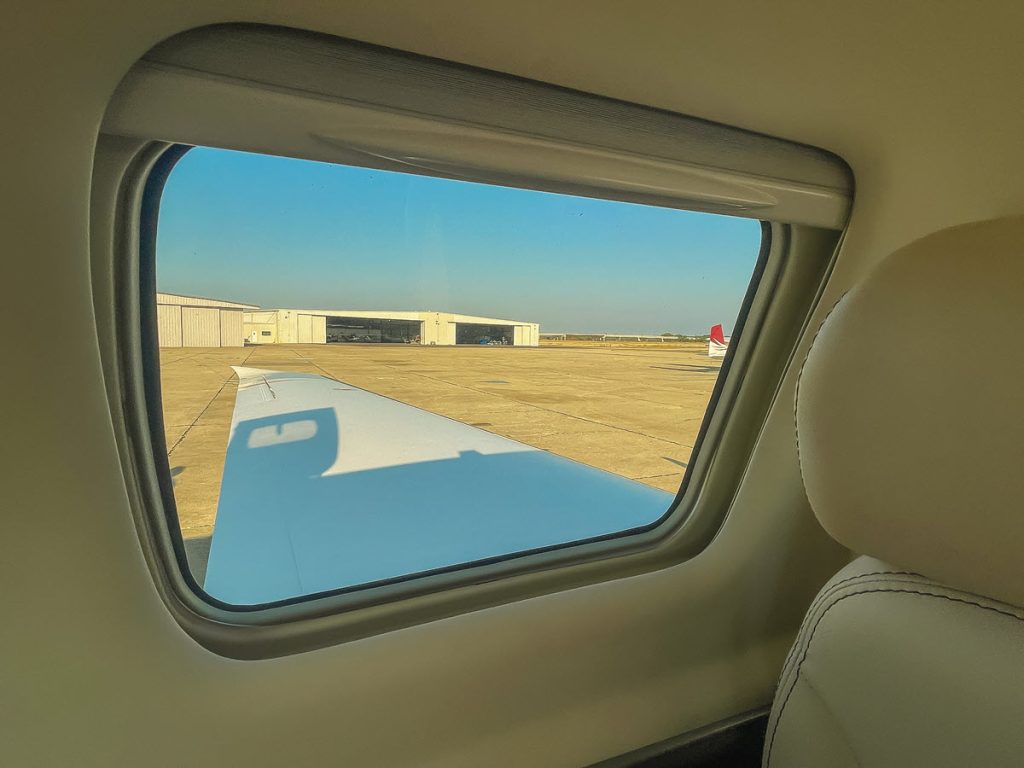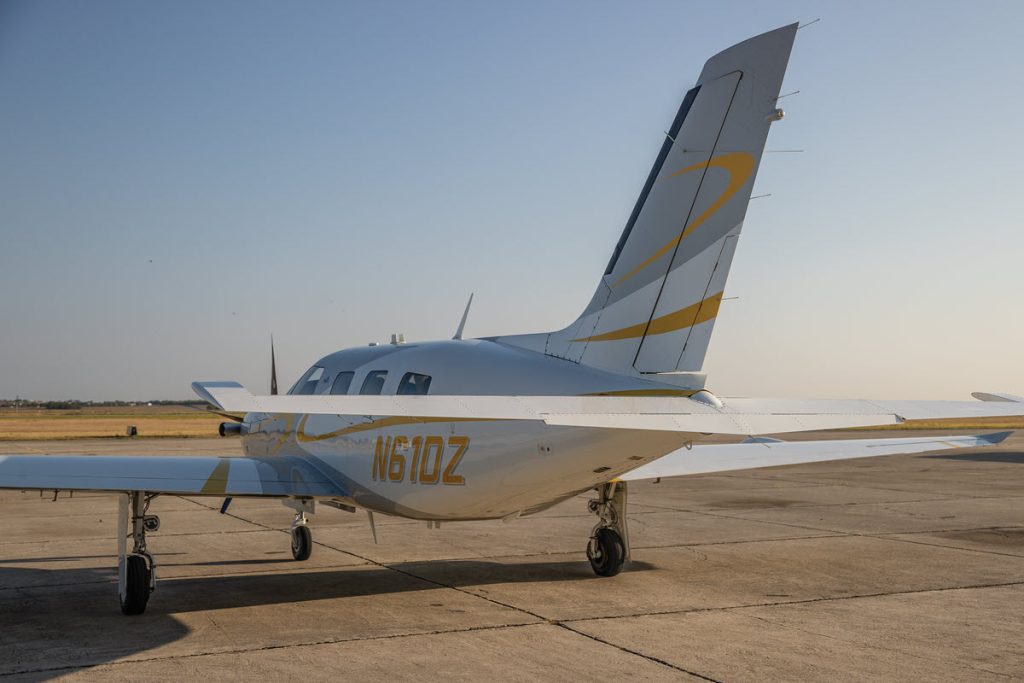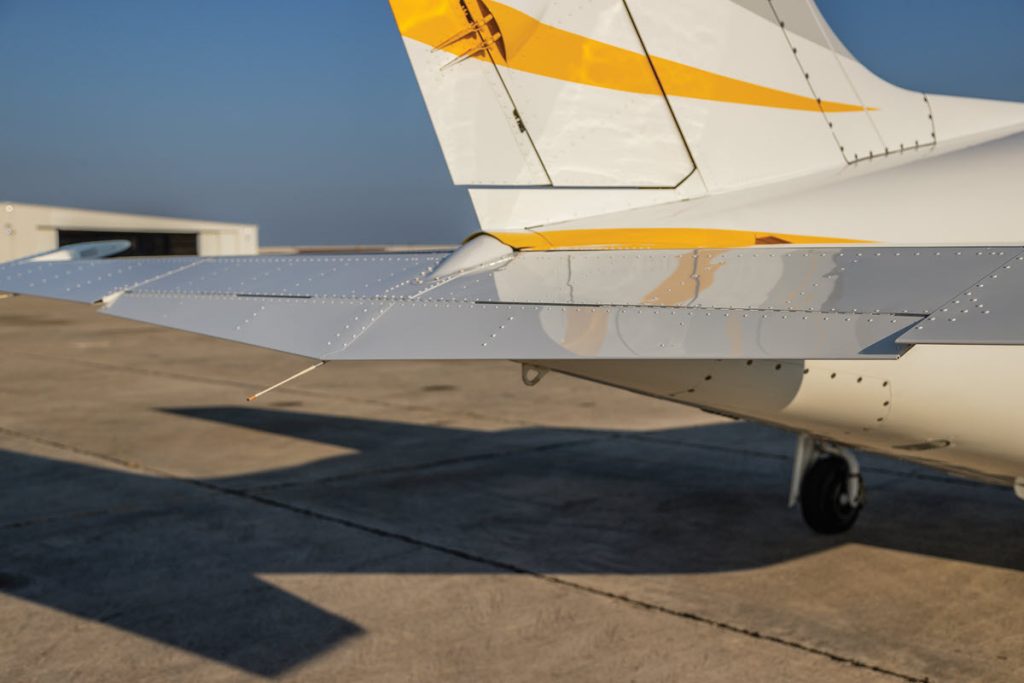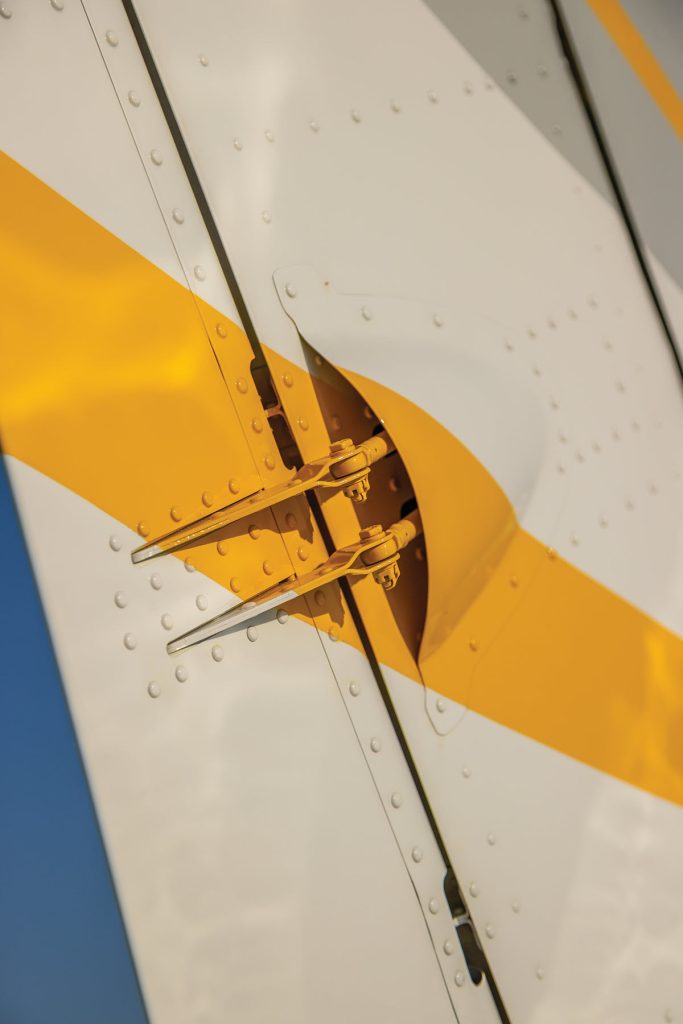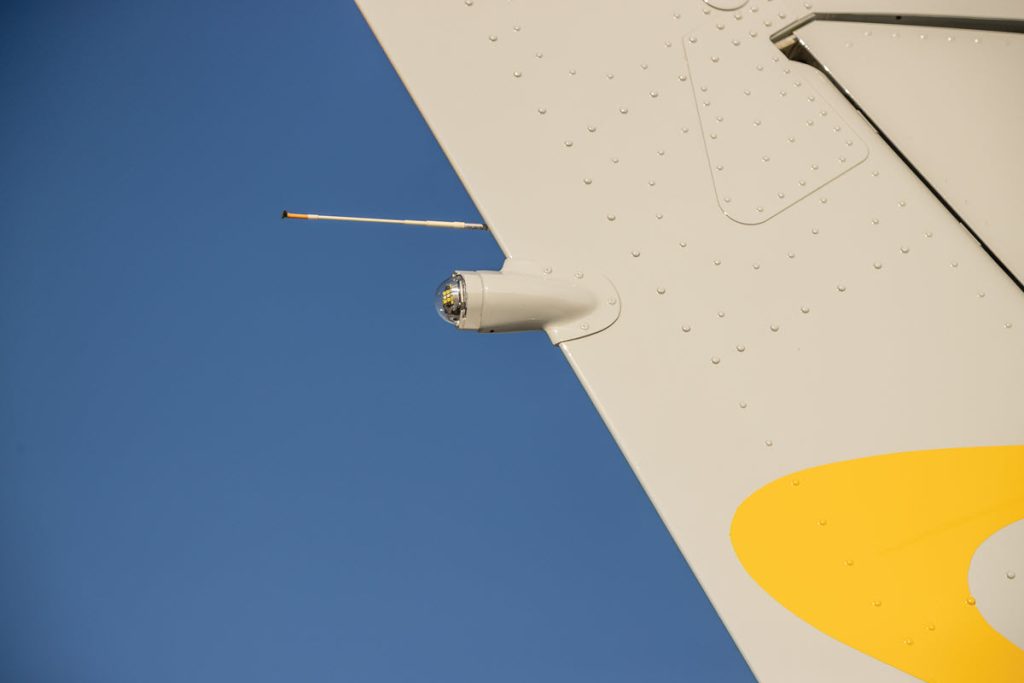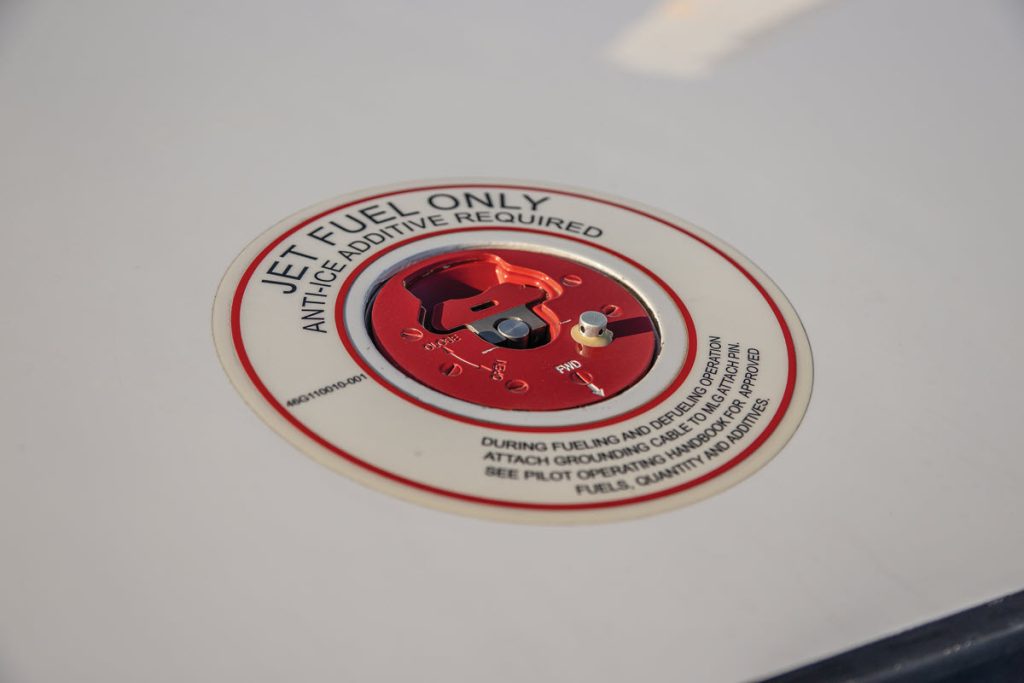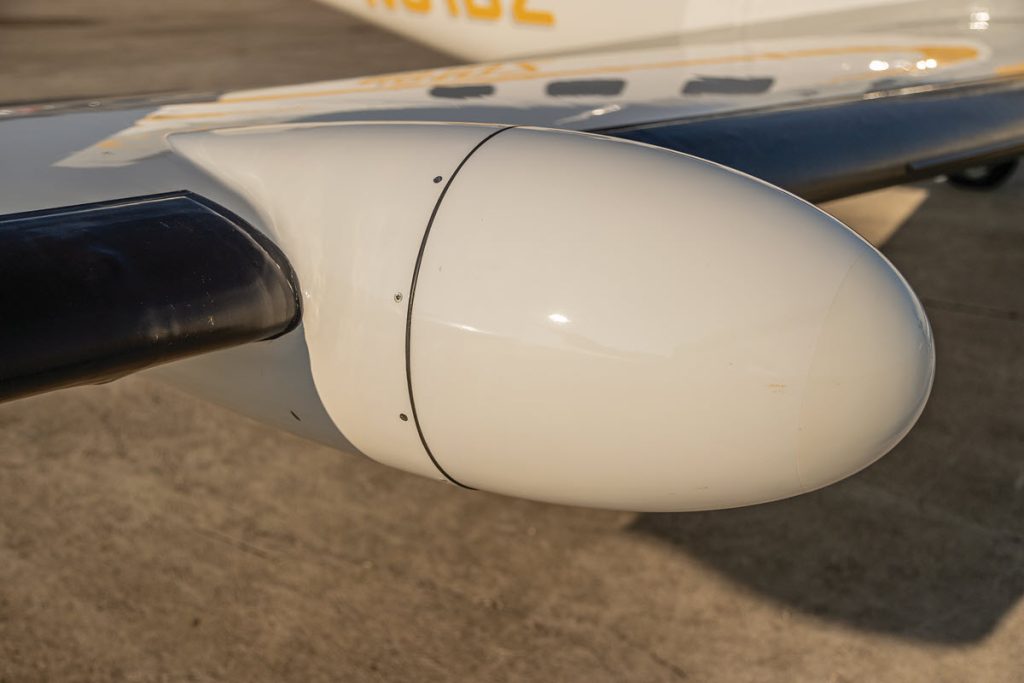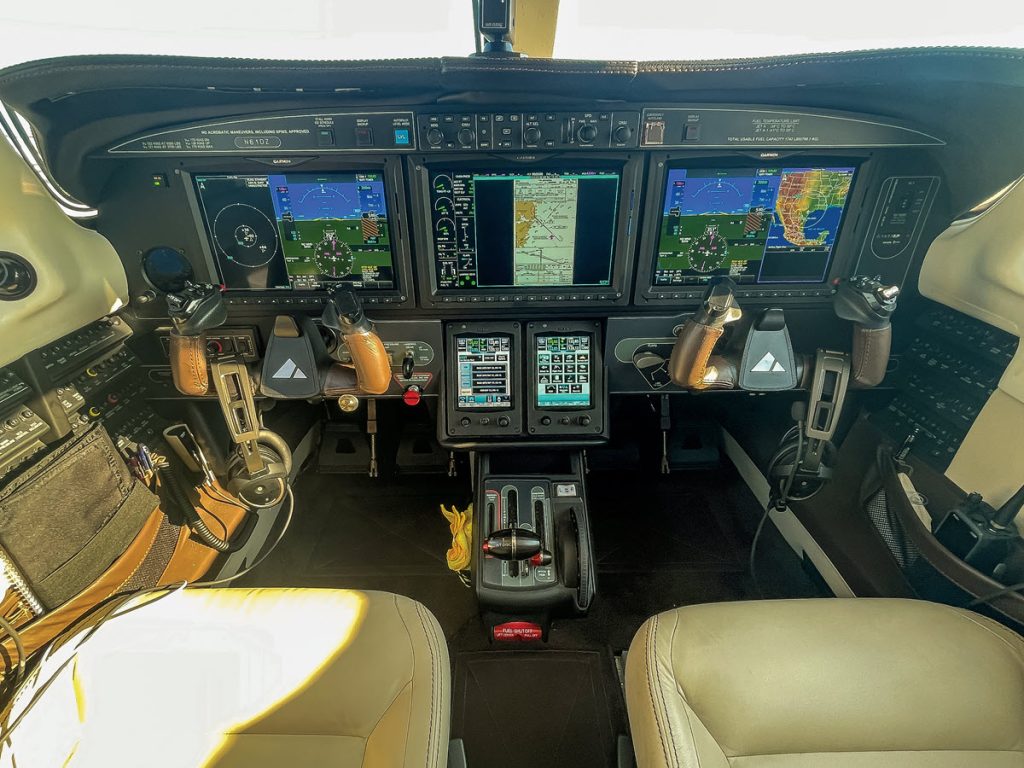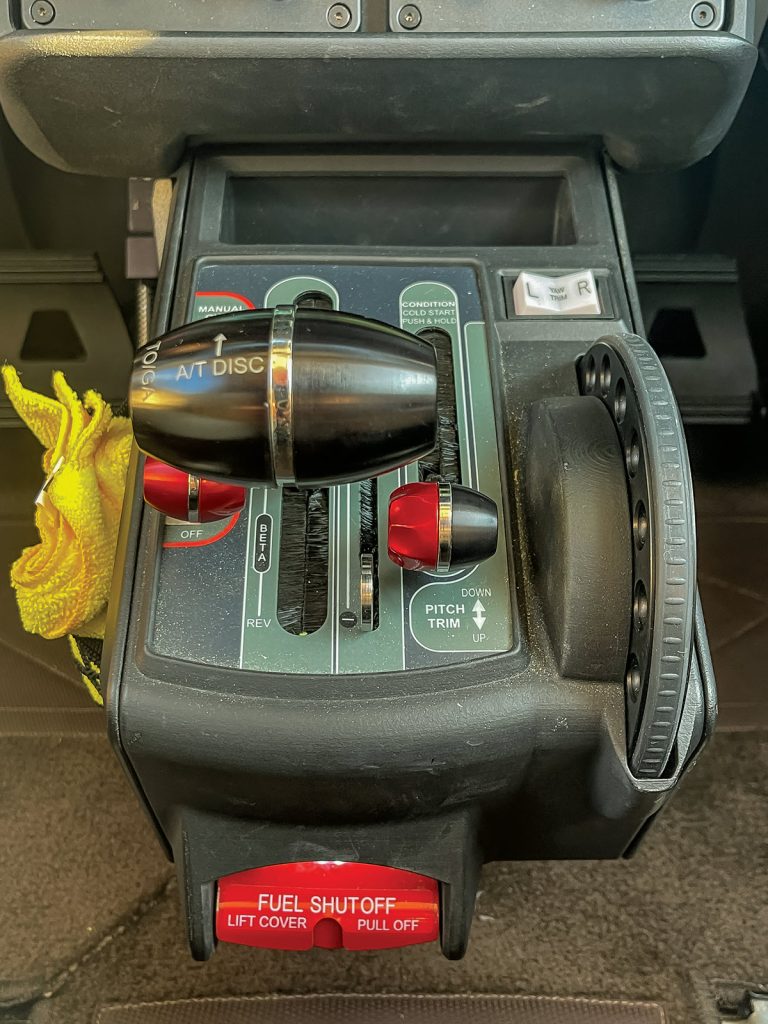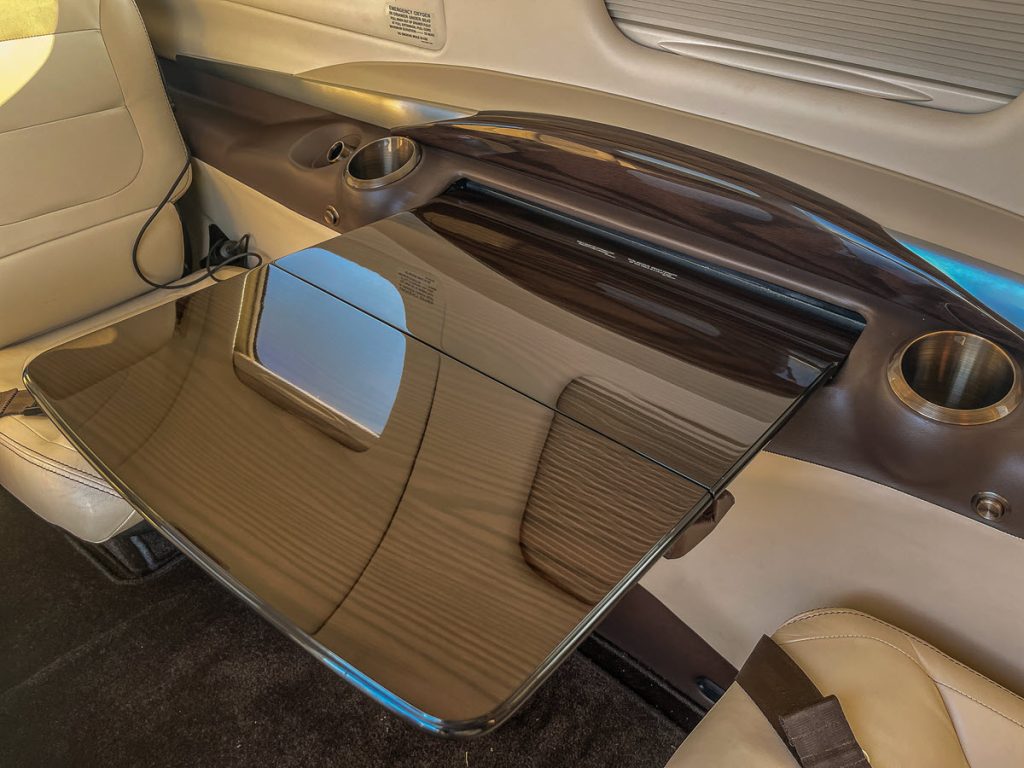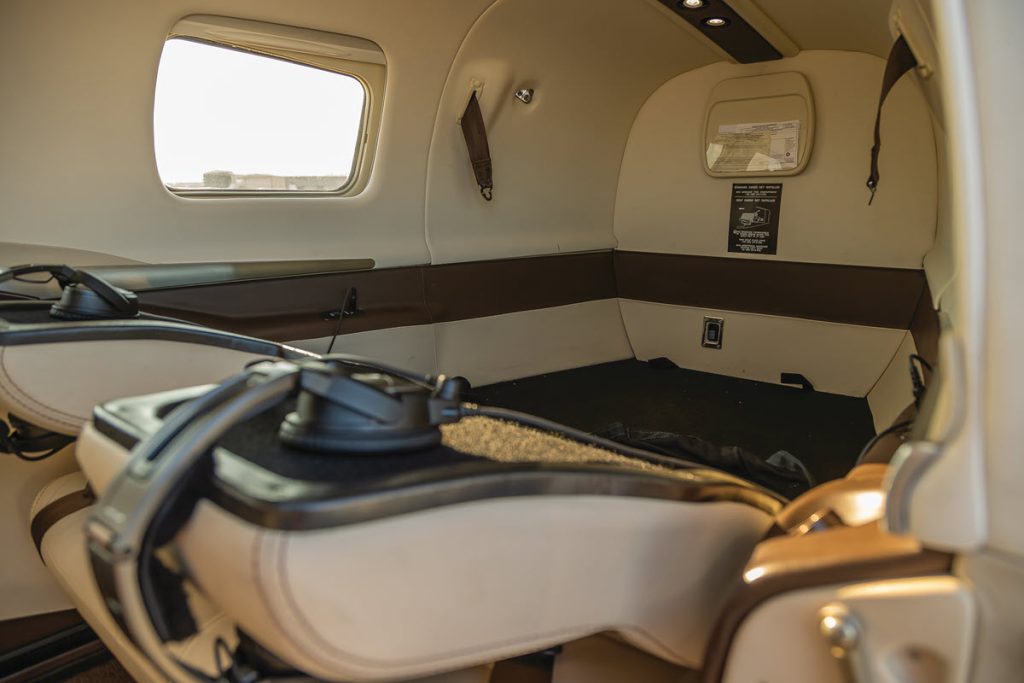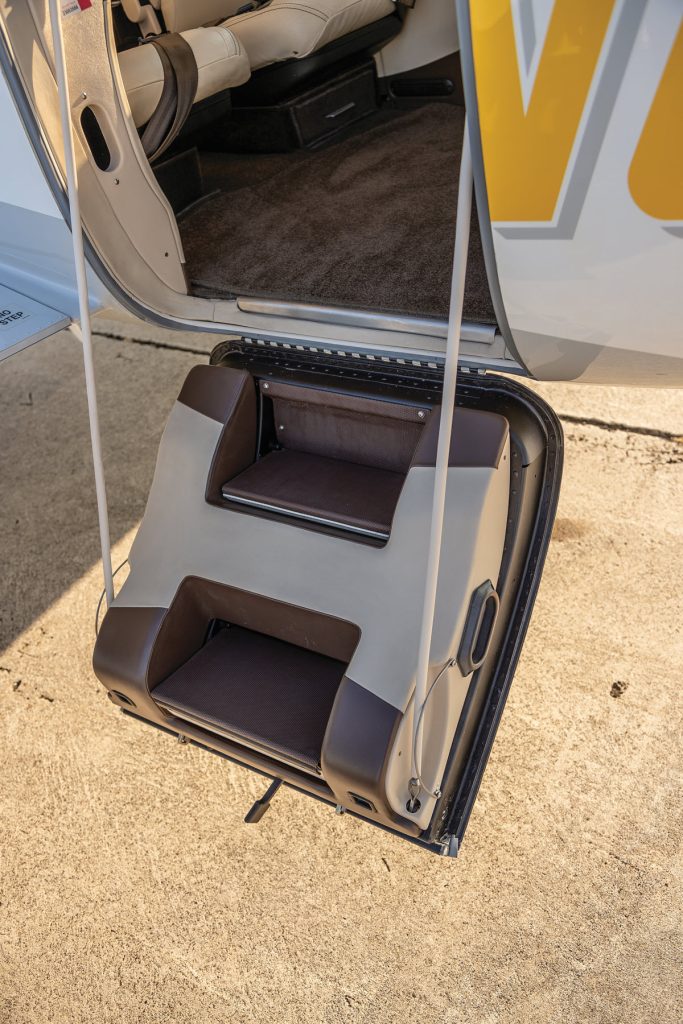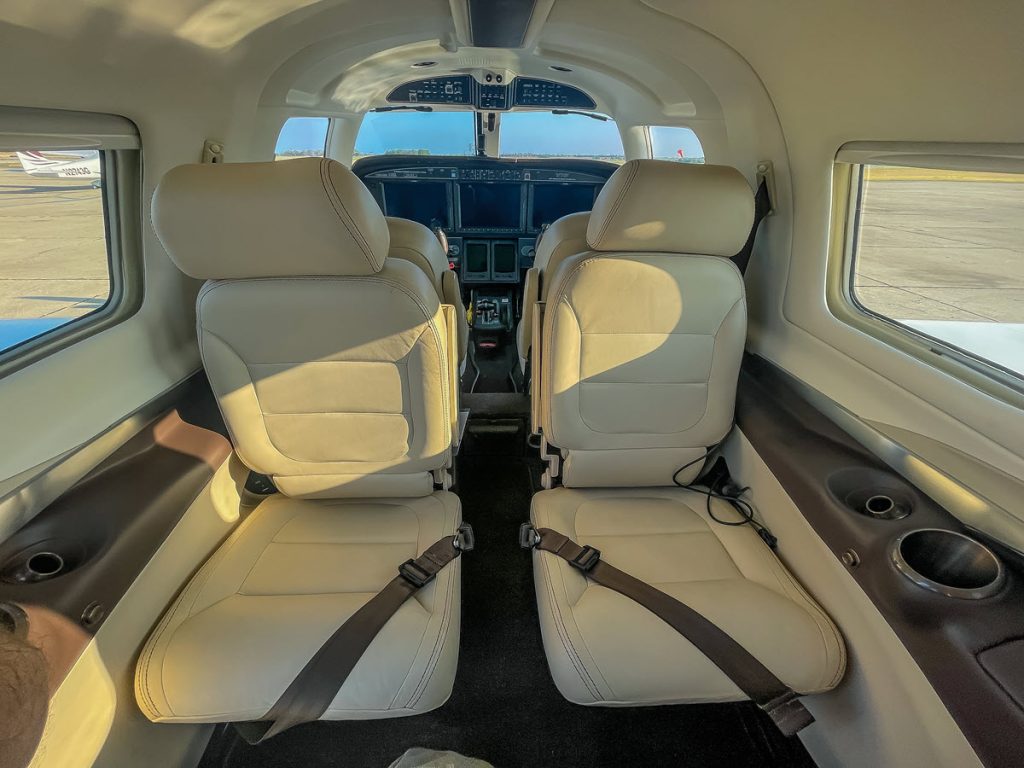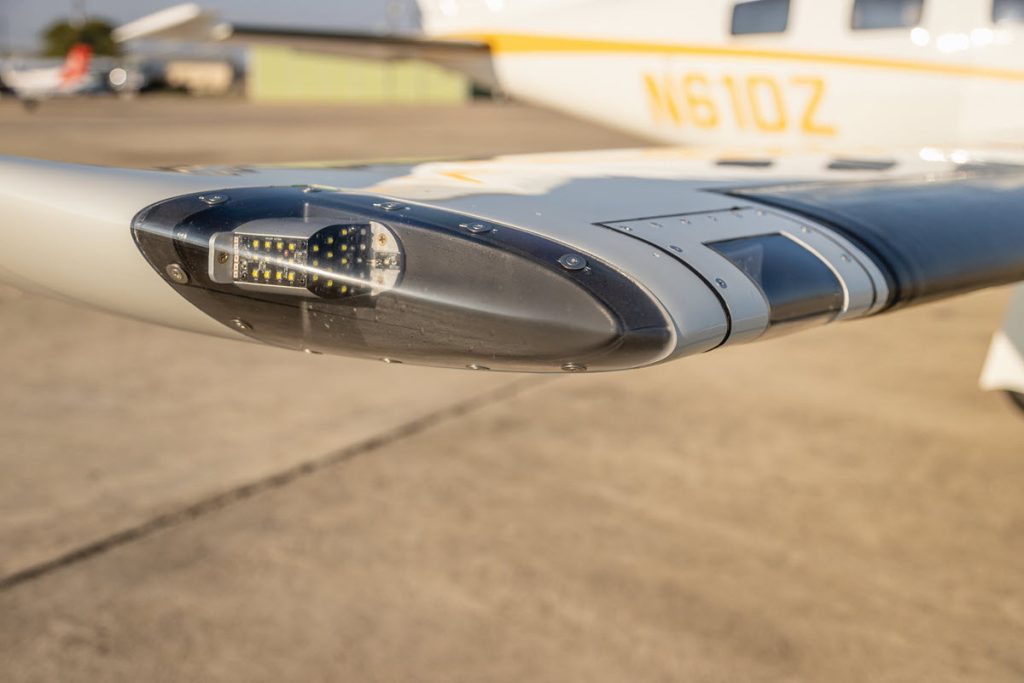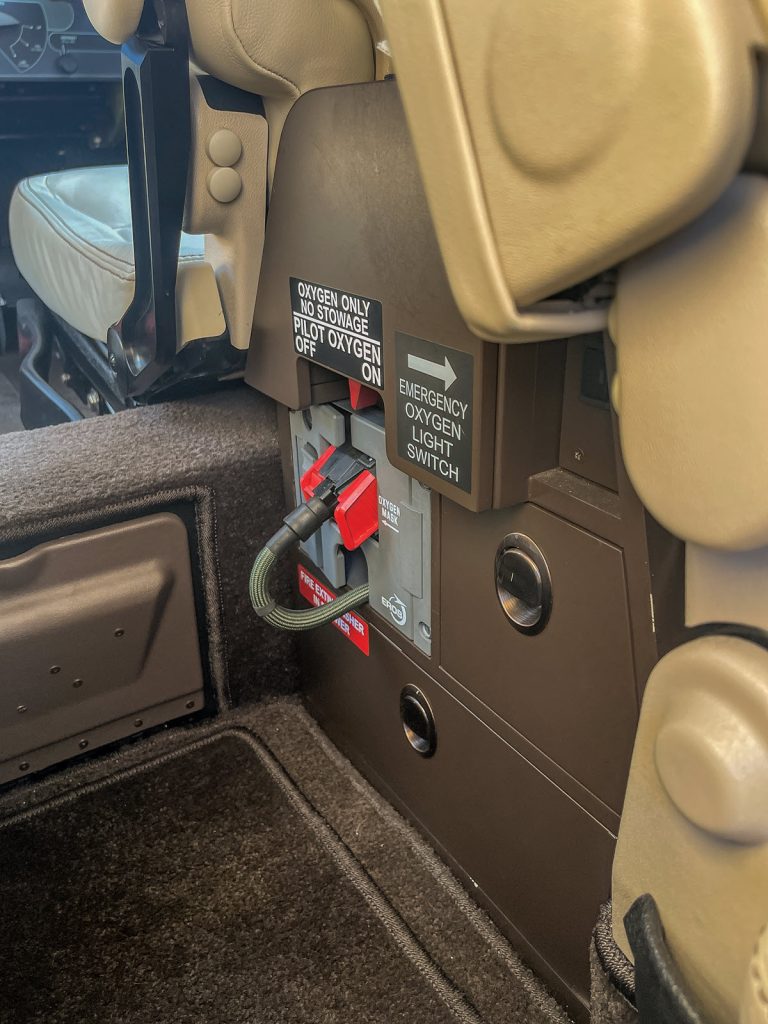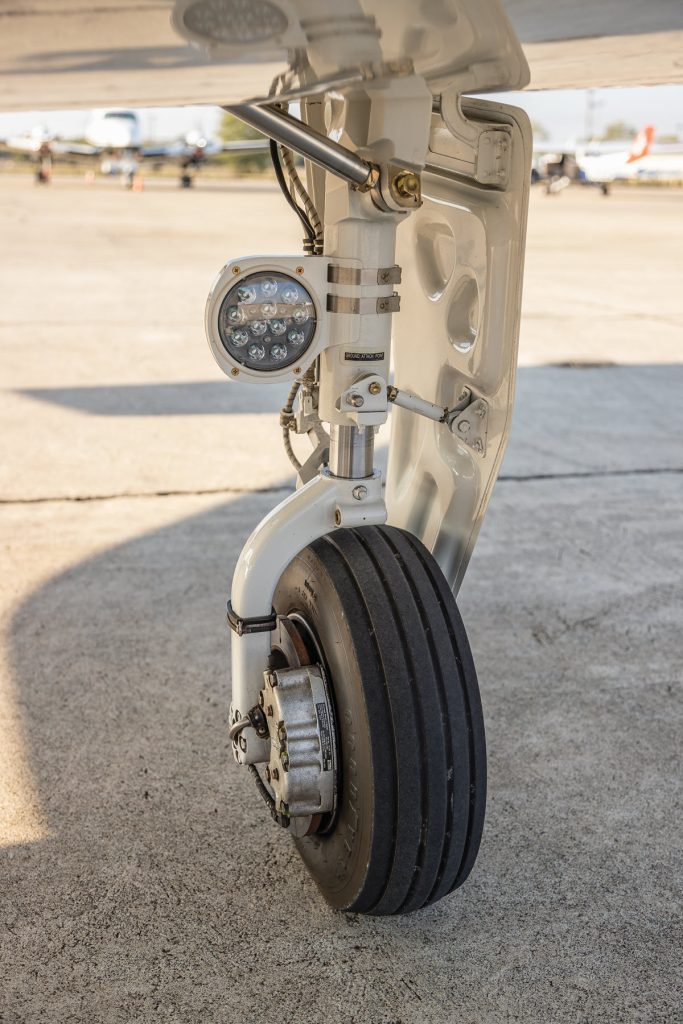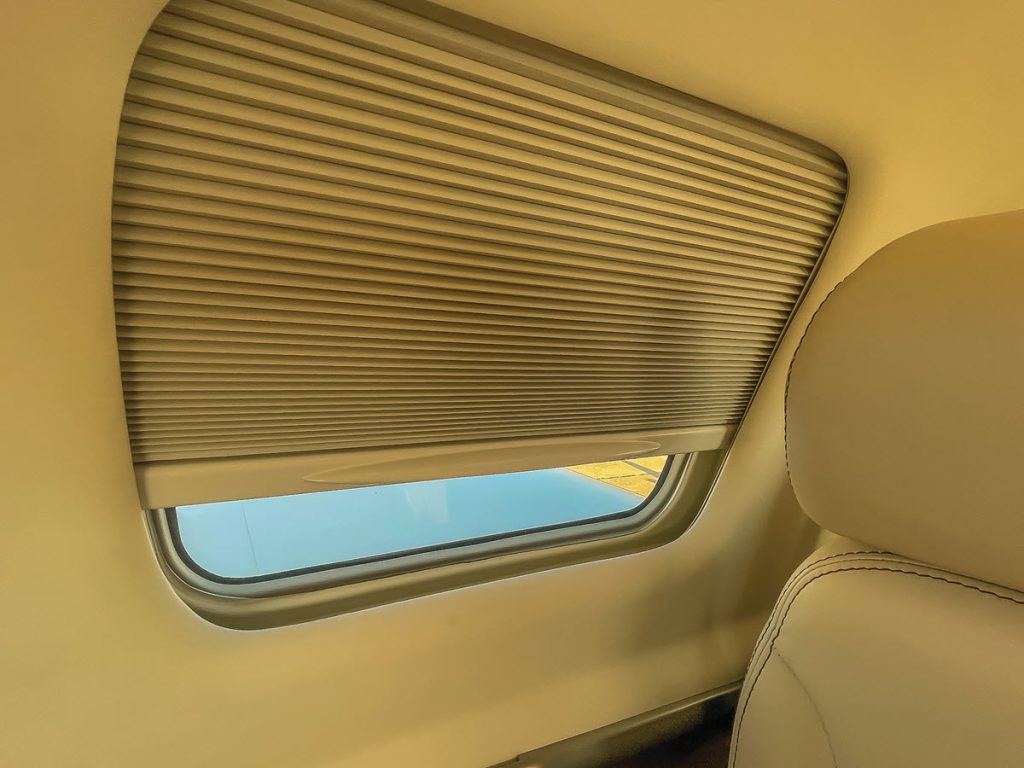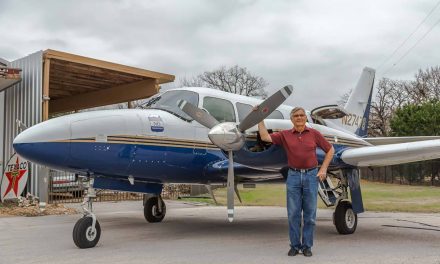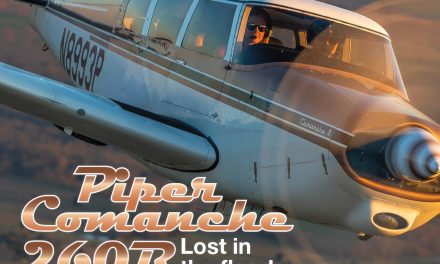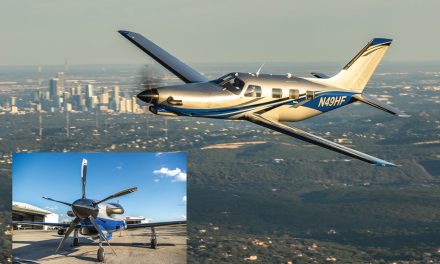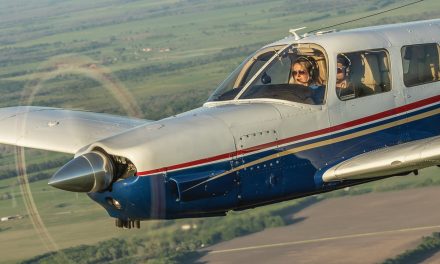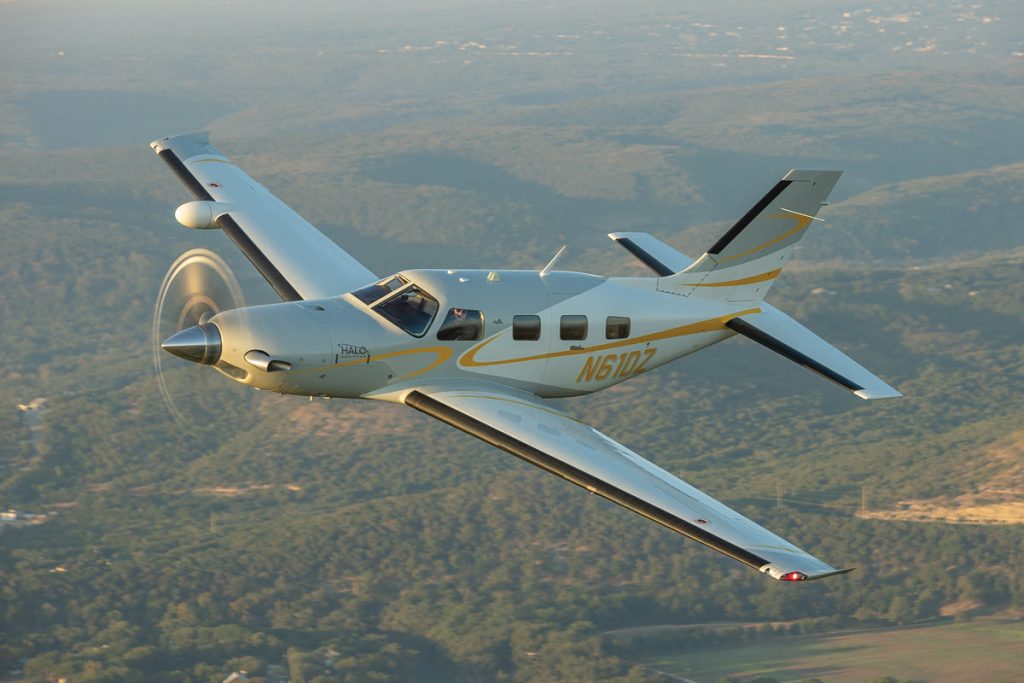
By Stephanie Finnegan
Texas native Lew Donzis grew up surrounded by aviation role models. His family included a father, brother, and several other relations who were all pilots. His father had a 150, followed by a 182, and ultimately a V35 Bonanza. Flying all over the country in a small aircraft was a natural way of life for young Lew, who accompanied his family in their airborne travels throughout the 1960s and 1970s.
“My father died, though, when I was 16, so he wasn’t around to encourage me, but when I was 20, I just sort of woke up one day and realized I needed to get my license. In retrospect, I’m sorry I waited so long,” Lew said.
Residing in Austin, and studying at UT, Lew learned to fly in a Tomahawk at Tim’s Airpark, a site that no longer exists. “The fleet was all Piper, so I progressed up to Warrior, Archer, Arrow, Cherokee Six, and so on. Over the years, I’ve flown dozens of aircraft types, but close to half are Piper products, and I’ve just always liked them,” Lew said.
In the 42 years that have passed since his flight epiphany, Lew has become the pilot and the owner of a Piper Turbo Arrow IV, a Malibu Mirage, and now a 2022 Piper M600 PA-46-600TP. His brand-new Piper, custom N number N61DZ, is a state-of-the-art bird that allows him to travel in comfort combined with speed, reliability, and next-level safety precautions. “I feel extremely lucky to get to own and fly such a wonderful aircraft. It does everything we ask of it and more.”
The M600 Just Made Sense
In December 2021, Lew purchased the Piper M600 from Cutter Aviation, but it didn’t deliver until March 2022. He was delighted to have the wherewithal to buy a brand-new model.
“Never in my life did I ever think I would buy a new airplane, but Piper’s Ultimate Care Plus (UCP+) program made all the difference. The program includes almost everything except insurance and hangar. But nearly all maintenance, including compressor washes, and even consumables like tires, battery, brakes, and oil are included, as well as training and chart subscriptions. The program is worth hundreds of thousands of dollars, and, for me, it was a trade-off of spending more for a new airplane and having fixed and predictable expenses, versus getting an older airplane with higher maintenance expenses, which can be significant on cabin-class airplanes,” Lew shared. “Some people complain about maintenance on the PA-46, but you have to put it in context, i.e., compared to what? If you look at any other pressurized six-seater, it’s almost certainly going to cost more to operate than any PA-46.”
Additionally, the Cutter team has made Lew feel like a VIP: a very impressed pilot. “I barely even lift a finger. I’m fortunate to have a service center at my home airport (San Antonio, Texas, SAT), so whenever I need anything, it gets done quickly and I don’t have to spend time away from home. Heck, even if I just need a quart of oil, they send someone over to pour it in.”
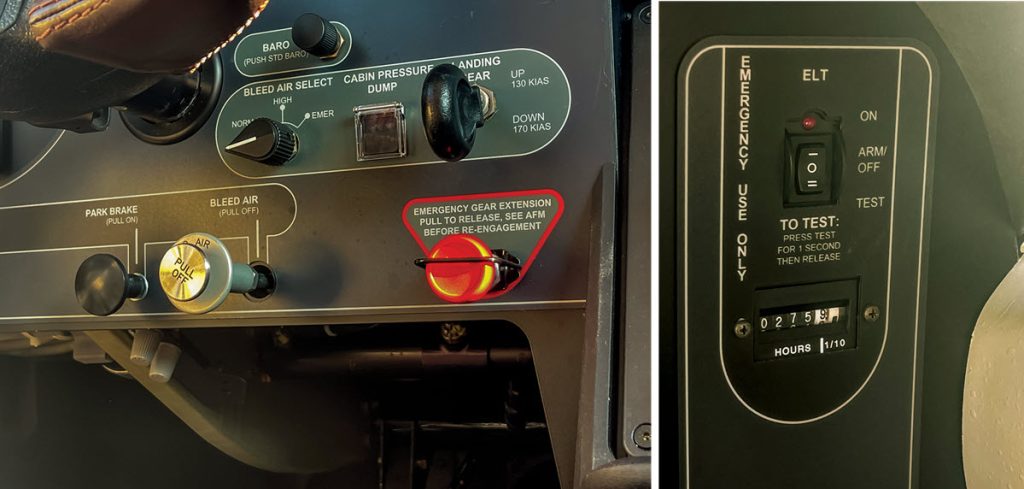
What Flew Through Lew’s Mind
When Lew decided it was time to own a plane again, having surrendered his Mirage after eight years of ownership, which were then followed by a “decade of sporadic flying,” he had many needs to weigh about what type of craft to pursue. “At this point, we don’t have the tolerance to sit in an airplane for those really long legs anymore. We used to fly up to seven hours in the Mirage, so having more speed was certainly a factor — especially since our kids are grown and live across the country.”
Doing his research and calculating what would work best for his lifestyle, Lew considered many options, such as a TBM. “But I would’ve had to find an older one, probably an 850, and operating costs are about double the M600. Also, I hadn’t been flying very much, and having about 1,500 hours in the Mirage made the M600 seem like a simpler transition.”
When Lew picked up the aircraft at the Piper factory, it was more than just a mere business transaction. “Of course, they deliver airplanes to new owners every week, but I really appreciate how they made the experience feel special.” Initially, it wasn’t his “holy grail,” but the more he has become exposed to its capabilities and its features, he admits: “Perhaps it is a dream airplane. It’s always great to go higher and faster, but there’s a knee in that curve just above the M600.”
Safety First and Foremost
The Piper M600 is the first Garmin Autoland–equipped aircraft to receive type certification. Its HALO safety system, which incorporates a bevy of autonomous safety features, as well as technologies to bolster situational awareness, is a persuasive selling point. It certainly helped Lew when he factored in what he wanted in a new plane.
“It definitely persuaded my wife. We’ve had several close relatives pass away suddenly and HALO certainly provides a sense of security. Far better than a parachute, in fact, because HALO takes you to an airport and has already notified ATC of pilot incapacitation. Another benefit of HALO is that if a passenger were to have a serious health issue in flight, I could engage it and go assist the passenger,” Lew elaborated. “HALO Autoland is pretty sophisticated. It can be activated almost anywhere at any time. In short, it will activate automatically if it finds the pilot unresponsive, particularly if the cabin altitude is too high and after automatic emergency descent mode. It will also activate after the Blue LVL button is pressed if the pilot doesn’t disconnect or reprogram the autopilot. And, of course, it will activate any time the Emergency Autoland button is pressed.”
The backup navigating assistance and additional insights that these safety features provide are remarkable. In some ways, it functions as a cyber copilot who is there to make a flight path smarter and safer: “It considers weather and terrain. It prefers wide runways and, in Class B airspace, it prefers smaller, towered airports over primary Class B. The reason being, it knows that whichever runway it lands on will be closed, so it would rather not shut down a busy Class B runway. It generally targets 140 KIAS because that’s below Va, Vlo, and Vle, as well as Vfe for approach flaps.”
First-Class Technology
The Garmin HALO technology is created to alleviate some of the anxiety and worry that can plague nervous passengers and family members, and give pilots real-world practical backup and relief. “The Garmin autopilot includes electronic stability and protection (ESP), the same that’s available on a wide variety of aircraft. However, in the M600, it’s coupled with the autothrottle, so not only does the autopilot attempt to avoid overspeed and underspeed conditions with pitch, it can also adjust the throttle. The autothrottle also prevents exceeding torque and ITT limits, and will automatically engage to do so.” Having transitioned from steam gauges to the Garmin 3000, Lew is a proponent for this step-up in avionics: “It just amazes me how easy and safe it makes our flying.”
If there is any regret or downside, it’s that Lew misses “getting to do a lot of VFR hand flying. The M600 is a traveling machine, really a mini-airliner, and we spend a lot of time cruising at altitude with the autopilot on. (In fact, it’s required to use the autopilot in RVSM airspace.) I really enjoyed doing the photo shoot for this article just because it was an opportunity to hand-fly low and slow. The M600, and really all PA-46s, are nice-flying airplanes. A bit heavy in roll, and light in pitch, but stable and solid with no nasty surprises. Stall behavior is benign and offers plenty of warning.”
Lew pointed out that the M600 is, indeed, the smallest and least expensive airplane with G3000 avionics. “So it’s potentially a steppingstone toward larger turboprops and jets that use the same platform,” Lew said.
Piping Up on Behalf of Piper
“I’ve always loved Piper aircraft, perhaps because I started my training in a Tomahawk and progressed up the food chain. That said, I’ve flown dozens of other types and I like almost any airplane. Some are more fun to fly than others, but in my opinion, when using an airplane for long-distance travel, the single greatest life-changing feature is pressurization. It really is difficult to put into words how much this is a game changer,” Lew said.
“When the Malibu was introduced in 1984, I aspired to own one and was finally able to do that a decade and a half later. The Malibu Mirage brought us an entirely new level of capability, and it was a wonderful and reliable bird. It had tremendous range. I used to make business trips from south Texas to Toronto and Long Island and could get there nonstop pretty easily, and usually one stop on the way back. Nonstop to southern California or Florida was easy as well, and we did that many times.”
Lew’s favorite instructor was one of the designers of this aircraft, so Lew has gained incredible knowledge and respect regarding the Malibu Mirage’s specifications. “The PA-46 is an incredible design in so many ways. There’s really no wasted space anywhere. Training with that instructor gave familiarity down to an unparalleled level of detail, so I have great appreciation for so many little details about the airplane.”
After owning and piloting a Mirage, the next logical step for Lew was the turbine version. However, for his missions, he viewed the Meridian as having too limited range. “The M600, though, fixes that with more than two hours of additional fuel. Also, the Vmo is increased from 188 KIAS to 251 KIAS, which is a big help in many ways, even in cruise at altitudes below FL220, and on practically every descent. It’s also been a big help in busy terminal areas. We are frequently assigned 210 knots and merged right in with airline traffic. If we were unable to do that, the controllers would be a lot less happy and we’d probably be getting sequenced to the back of the line.”
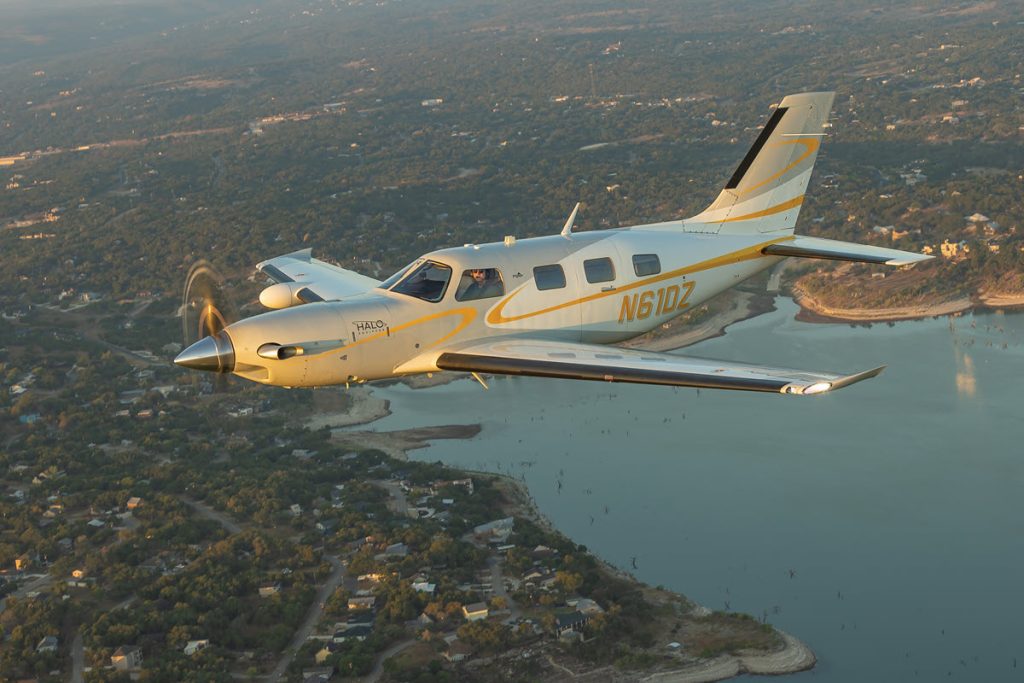
The M600 Rises Above the Rest
From Lew’s perspective, the M600 is in a category of its own, its category is like no other aircraft on the market. “It fills an interesting niche in aviation. It’s the biggest, fastest airplane you can get that is still maintained like a small airplane. Annual inspections and a few other scheduled items are about it. Anything larger and you move into phase inspections, and a much more complex and expensive maintenance environment,” he said.
“The M600 is also, currently, the biggest airplane that can be flown under BasicMed. With proposed changes, there could be others, but it’s also actually a reasonable airplane to fly under those rules. You can fly at 17,000 with a very low cabin altitude and get around 260 knots true on about 50 gallons per hour. With more than 260 gallons in the tanks, you can still go over a thousand nautical miles and be above a lot of weather,” Lew said.
“The M600 handles pretty well for what it is. It’s perfectly satisfying to hand-fly. Control forces are not exactly light, but that also makes it a stable instrument platform. But handling is very predictable, and I haven’t encountered any surprises.”
Lew is an entrepreneur, who describes himself as a “techie at heart.” A business owner, he has been involved with computer networking for more than 40 years. “We have produced a wide variety of products for environments ranging from residences to small and medium businesses all the way to enterprises and carriers.”
As such, Lew has logged significant miles on his airplanes. “There are many occasions where we need to go places or make trips that are far more difficult on airlines, and in many cases, general aviation is a huge timesaver. The M600 is certainly a very capable tool in that regard, and is probably regarded as more of a business-class aircraft.”

Specifications & Performance: Piper M600 PA-46-600TP
These specifications are for informational purposes
only and are not to be used for flight planning.
Source: Piper M600 2019 Specification Book
| Engine: | Pratt & Whitney Canada PT6A-42A |
| TBO: | 3,600 |
| Horsepower: | 600 shp |
| Max Cruise Speed: | 315 mph (274 ktas) |
| Vmo Speed: | 288 mph (250 ktas) |
| Fuel Capacity: | 260 gal |
| Max Range: | 1,658 nm (@184 ktas with 45 min reserve) |
| Empty Weight: | 3,650 lbs |
| Useful Load: | 2,400 lbs |
| Baggage: | 20 cu. ft./100 lbs. |
| Maximum Take Off Weight | 6,000 lbs |
| Takeoff Over 50 ft Obstacle: | 2,635 feet |
| Landing Over 50 ft Obstacle: | 2,659 feet |
| Rate Of Climb: | 1,556 fpm |
| Maximum Approved Altitude | 30,000 feet |
| Cabin Pressurization: | 5.6 psi maximum pressure differential |
| Doors: | 1 |
| Passengers: | 5 + 1 |
| DIMENSIONS: | |
| Fuselage Length | 29.7 feet |
| Fuselage Height | 11.3 feet |
| Total Wingspan | 43.16 feet |
Pleasant Surprises Abound
When a pilot buys a new bird, there can be lots of unforeseen bugaboos. For Lew, the M600 has been a font of good fortune. “A big surprise is that it consistently outperforms book performance numbers, which is almost unheard of in aviation, where manufacturers publish the most optimal numbers they can come up with. At the top altitudes, we get about 260–265 KTAS on around 37 gph, or at max cruise we see 275–280 KTAS on about 41 gph. There’s really nothing else in this class that can do that. We see those speeds (or better) at slightly lower altitudes, but with higher fuel burn. It also climbs pretty well, a solid 1,500 feet per minute up to around FL220–230, gradually decreasing to around 1,000 ft/min to the ceiling of FL290/FL300. We reach FL290/FL300 in about 22 minutes, which is pretty nice. On descent, there is no problem doing at least 2,500 ft/min, or even more if necessary. That’s in comparison to the piston PA-46, where it took about 45 to 50 minutes to climb to FL250, so there was a lot invested in the climb, thus making stops much more undesirable. With such good climb and descent rates, getting down and back up isn’t as big of a deal as it was in the piston.”
Lew also has high praise for the autothrottle feature. “Before having one, I just figured that it’s no big deal, it just moves the throttle, that’s not much of a timesaver. But there’s so much more to it than that. Not only does it greatly simplify operation by managing power in every phase of flight, in cruise, rather than getting out the performance charts, interpolating altitude and temperature, and approximating the correct power setting, the autothrottle automatically calculates the exact power setting. It makes engine management a no-brainer and offers almost everything you’d get with FADEC.”
Additionally, Lew is pleasantly surprised about how often the RVSM altitudes of FL290 and FL300 have been useful: “Not only is it more efficient, but in some cases, there are flights we can make nonstop at those altitudes that we couldn’t have made comfortably otherwise. What’s more interesting is how often those altitudes have been above the weather when lower would have been in the clouds. I do wish the pressurization differential was a little better, but it’s not terrible. At FL300, the cabin is somewhere around 10,500 feet.”
One facet of turbine-powered aircraft that is relevant is that they do need to fly high to be efficient. “In that regard, the piston-powered PA-46es (Malibu, Mirage, and Matrix) offer great flexibility, because you can fly high when it’s beneficial, but also fly low against a winter headwind, without major impact on fuel burn. Turbines don’t generally offer that option because they burn gobs of fuel down low. So, if you’re fighting a headwind, you either just have to accept the slower speed, or take it in the wallet at lower altitudes. The only consolation is that it’s a lot better to take a 75-knot headwind when you’re doing 275 knots than when you’re doing 200 knots in the piston.”
Keeping His Head Above the Clouds
When asked if it makes sense to buy a plane rather than to lease or rent one, Lew offered personal, sage advice and a very clear-cut analogy. “Owning an airplane — any airplane — is sort of like owning a home versus renting a hotel room. Sure, both are fine, but it’s really apples and oranges. I’ve rented plenty of airplanes in my life, and have enjoyed almost every minute, but ownership has a sense of permanence, where you know where everything is and what condition it’s in. In some ways, it’s more work because you have to keep track of maintenance and so on, but it’s so rewarding to own and operate your own airplane.”
If a prospective buyer does decide to take that leap of faith, Lew stressed the need for doing homework and legwork: “For any airplane, much less a PA-46, get a thorough pre-buy or annual inspection by an expert, and get help from people who are experienced and knowledgeable with the specific type of aircraft you’re considering.”
To this end, Lew holds PMOPA and its storied history in high esteem. “The PA-46 community has some amazing resources and I would encourage anyone who owns or operates any model of PA-46 to join PMOPA. There is a wealth of information and support available.” Lew has been a member of MMOPA/PMOPA since 2000. “I know quite a few of the old-timers in that group and have been a member of AOPA since 1981.”
Come Fly with Me
Lew and his family have made sure to use their planes for pleasure and memorable personal moments. “Over the years, we’ve had so many amazing adventures all across the country, with my wife and me, other friends and family, and our children and grandchildren. We go to the mountains west quite frequently and have been to Canada several times and to the Bahamas,” Lew said. “The majority of our flying, especially in this airplane, is for leisure travel, and we take along our dog (named Piper, of course!) She’s a really great little traveler and loves to get in the plane and go off to new adventures!”
Lew courted his wife, Kathy, via his early piloting skills. He literally and stratospherically swept her off her feet. “My recollection is that we went flying on our first date, or at least that’s what it says in my logbook. As to whether she was impressed, well, we are, after all, married, so I guess it worked!”
During their marriage, she has been an enthusiastic passenger, but has not expressed any desire to learn to fly on her own. “So far, I have been unable to inspire anyone else in the family to become a pilot. I’ll keep trying, though. I’d like to become a CFI at some point, too!”
In the meantime, Kathy cheerleads her husband as he flies them in their M600. “Even though she’s not an airplane person, she really appreciates the flexibility and utility of general aviation. Everyone loves the flexibility of being able to travel wherever and whenever we want.” Acknowledging that the Autoland was a significant factor for her, Lew shared that she also had input on one of the cosmetic choices. “She designed the M600’s paint scheme.”
Besides taking the planes up for business meetings and holiday getaways, Lew has made sure to use his craft for charitable purposes, too. “I flew for Angel Flight for several years. I’m considering joining some other organizations as well. We just need to find the right match.”
A View From the Pilot’s Seat
Having owned a series of planes, and having rented his fair share, too, Lew is able to give a sound opinion on what it means to fly all sizes and shapes of planes. He recalled the first plane he owned, the Piper Turbo Arrow IV. Though it is a memory from long ago, he was able to recount what was special about that first owned craft. “With a fixed wastegate and T-tail, it was probably a pretty good learning platform because it requires some finesse to fly well. We loved that plane, and my wife and I flew it all over the country. We sold it after a few years and then I went back to renting.”
Though that PA-28RT-201T hails from many moons ago, it served its purpose of getting him where he needed to go, and also helped him to gain confidence, experience, and flying persistence. “It’s kind of funny, but as we move up the aviation food chain, equipment gets bigger, faster, heavier, and more complex, but not necessarily more difficult to fly,” Lew mused. “Turbine power is a good example. It’s just so much easier than managing a piston engine, especially in the flight levels. Sure, you have to watch out for some potentially very costly mistakes, but for the most part, there’s a lot less to do. In the M600, there’s just one power lever, no propeller or mixture controls.”
Having been an aviator for 42 years, Lew Donzis has a very Zenlike acceptance of being airborne: “Flying for me is a form of therapy. Of course, there can be intense moments, but even then, it relaxes my mind because of the total focus required.”
Select a photo below to open a pop-up slideshow
